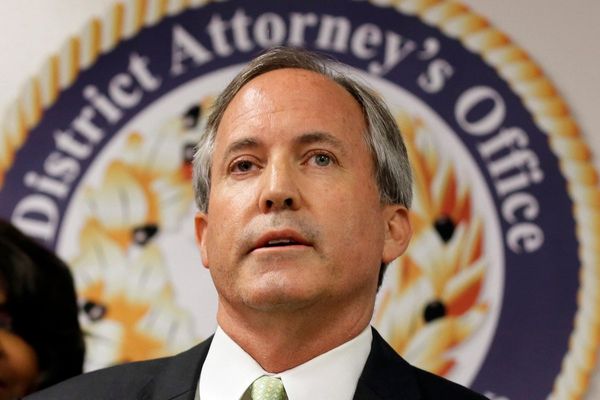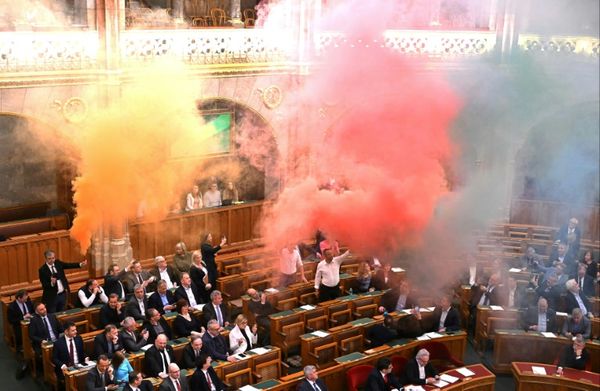This month’s extended fight over the House speakership confirms once again that America’s two major parties don’t operate as mirror images of each other. While Republicans engaged in a dramatic intramural battle — complete with threats, name-calling, and even an attempted physical confrontation — Democrats behaved with relative serenity, electing their leaders by acclamation.
The Democrats’ comparatively harmonious state is often ascribed to the talent of leaders such as President Joe Biden and former House Speaker Nancy Pelosi, who are adept at cutting deals and enforcing discipline. But most of the credit for making the Democrats a more unified party belongs to the voters.
The Democratic Party has long been organized as a “big tent” coalition of multiple jostling subgroups. But the most important divisions among its federal officeholders have historically occurred along a single fault line: On one side are moderates and conservatives elected from right-of-center Southern or rural constituencies; on the other are more liberal party regulars representing the left-leaning urban North and West.
When Democratic leaders have faced trouble enacting the policy agenda endorsed by the national party platform, opposition from the southern/rural wing has usually been the main impediment. These chronic dissenters turned against much of the New Deal in the late 1930s, blocked major civil-rights legislation until the mid-1960s, and defected to provide pivotal support for Ronald Reagan’s tax and defense policies in the early 1980s. More recently, they helped to kill Bill Clinton’s health-care plan in 1994 and temporarily imperiled Barack Obama’s more modest reform proposal 16 years later.
But the old-line Southern and rural Democrats are disappearing from office, replaced in most cases by Republican successors. By the most recent session of Congress, Democrats held just 32% of all Southern seats in the House (many of them majority-minority enclaves with mostly liberal electorates) and 18% in the Senate.
The party’s popularity in rural America has eroded even more dramatically. By my calculations, the proportion of rural seats represented by Democrats nationwide dropped from 50% to 13% in the House, and from 50% to 17% in the Senate, between 2010 and 2022.
Democrats are gaining strength elsewhere, especially in well-educated suburban constituencies that became alienated by the Tea Party and Donald Trump. But most newly elected politicians from these areas are mainstream Democrats in the mold of Obama and Biden, with little political incentive or personal inclination to separate themselves from their party’s national brand.
True, voters in several urban House districts have recently elected staunch progressives with a distinct political style. But the Democratic “Squad” is not simply a left-wing version of the House Freedom Caucus — it lacks the Republican renegades’ oppositional attitude toward party leadership and has yet to demonstrate the same willingness to block major legislation on the grounds of ideological impurity. Unlike Republicans, Democratic voters have not shown much enthusiasm for nominating and electing candidates who engage in openly hostile battles against their own party’s national leaders.
In a large, diverse country governed by just two major parties, unity will always be a relative term. Factions will continue to jockey for power, and the policy differences b etween the likes of Representative Alexandria Ocasio-Cortez and Senator Joe Manchin will remain significant (though not always unbridgeable). But for all of the personal skill displayed by Biden, Pelosi and Senate Majority Leader Chuck Schumer in shepherding legislation through the last Congress, their task was made much easier by the larger geographic and electoral trends that have made their party much more ideologically coherent.
As former House Speaker Tip O’Neill famously remarked, “All politics is local.” Even the most strategically gifted leader will have a hard time persuading politicians to vote the party line if they think it would anger the folks back home. More than anything else, Democrats’ current harmony reflects the fact that few party members now see themselves as facing such a dilemma.
____
ABOUT THE WRITER
David A. Hopkins is an associate professor of political science at Boston College and the author of "Red Fighting Blue: How Geography and Electoral Rules Polarize American Politics."
This column does not necessarily reflect the opinion of the editorial board or Bloomberg LP and its owners.







